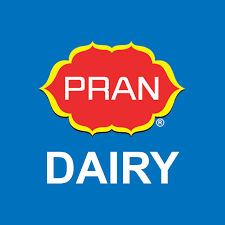The dairy sector has continued to grow steadily despite a number of recent economic setbacks. Over time, the sector grew from its modest beginnings to a large size, with numerous dairy farms currently operating throughout Bangladesh. As a food supply and a means of livelihood, the industry has the potential to drastically alter the economic landscape of the nation. The industry has had rapid growth in the last several years, with innovation and new technology greatly improving production, market accessibility, and sustainability.
There are currently two models that may be used to categorize the value chain of the dairy industry: the formal processed market model and the informal, traditional market model. According to an International Farm Comparison Network survey, just 9% of milk is delivered to industrial processors, and nearly 91% is sold informally. In the informal model, farmers sell milk directly to consumers; in the formal market segment. However, most cooperative models are copied, in which farmers form cooperatives that assist in distributing milk to industrial facilities that ultimately sell it to consumers. In the formal segment, automation can play a crucial role in the collection and processing of milk and the production of end products, aiding in achieving economies of scale and reducing cost per unit.
As said earlier, traditional channels dominate the dairy industry in Bangladesh, and the most significant cattle for milk production in Bangladesh are cows, which account for 90% of the total milk obtained by farmers.
Source: Department of Livestock Services
The formal value chain accounts for just 9% of the total milk output, yet it is the most effective model for increasing the production of value-added products. Because of this, and because milk is sensitive to temperature and length of storage, industrial milk processors are shifting their collecting locations closer to areas where milk is produced. Additionally, as consumers these days are more concerned with quality and freshness, this helps meet their needs. The sophisticated refrigeration technology and milk testing equipment found at these collection stations allow dairy producers to get paid based on the amount of fat in their milk.
Large volumes of foreign milk powder are entering the local market because there is a large imbalance between supply and demand, which is filled with various imported dairy products. Slow progress has been noted despite the government’s strong encouragement of the local dairy industry’s expansion. The nation has become more reliant on imported milk powders in recent years due to rising domestic consumption and industrial demand. As long as local goods continue to be reasonably priced, increasing domestic milk production can aid in reducing reliance on imports.
Major Key Players
| 1. AARONG Dairies (BRAC) |  |
| 2. RD (Rangpur Dairy) |  |
| 3. Milk Vita | |
| 4. Pran Dairy |  |
| 5. Farm Fresh Milk (Akij Dairy) |  |
| 6. Arla Foods Ltd | |
| 7. NewZealand Dairy |  |
| 8. SANOWARA Dairy Foods Limited |  |
| 9. Danish Dairy Farm Ltd (Partex Group) |
Current Market Players and Their Share
Major industrial processors such as Milk Vita, Aarong Dairy, and PRAN control over half of the processed dairy product industry. The primary target consumers are predominantly urban consumers who desire a wide selection of brands, qualities, and products. People can access processed goods via retail stores, supermarkets, restaurants, and hotels.
For more information, or if you have any research-related questions, please contact us…






